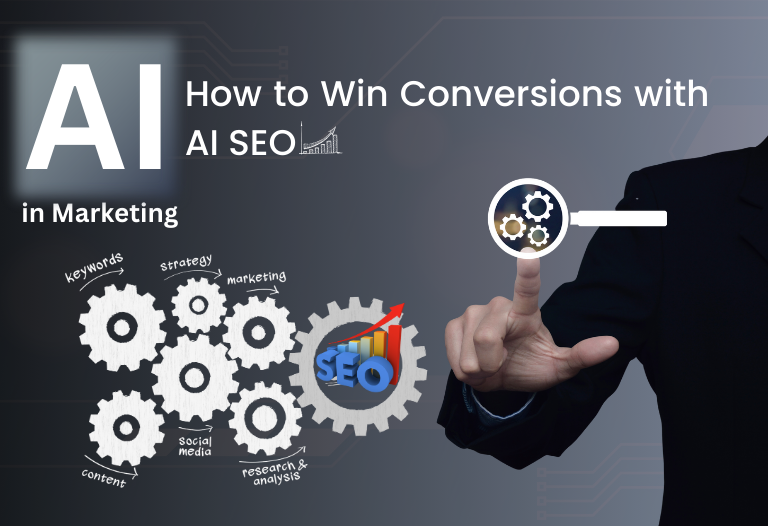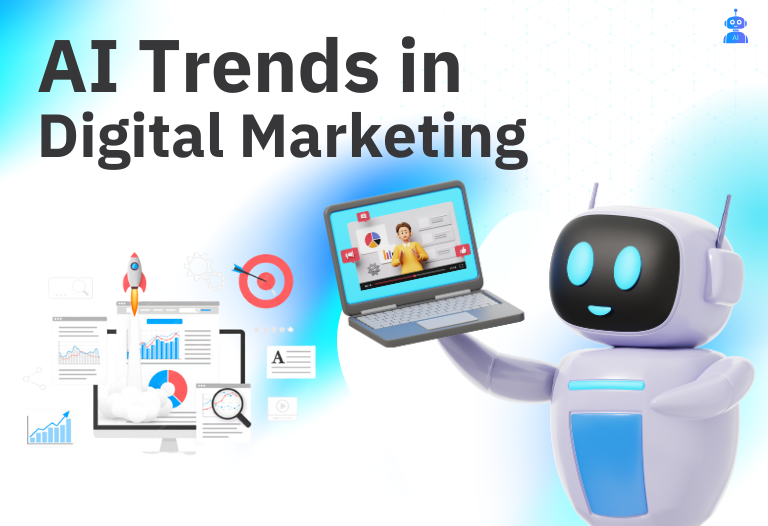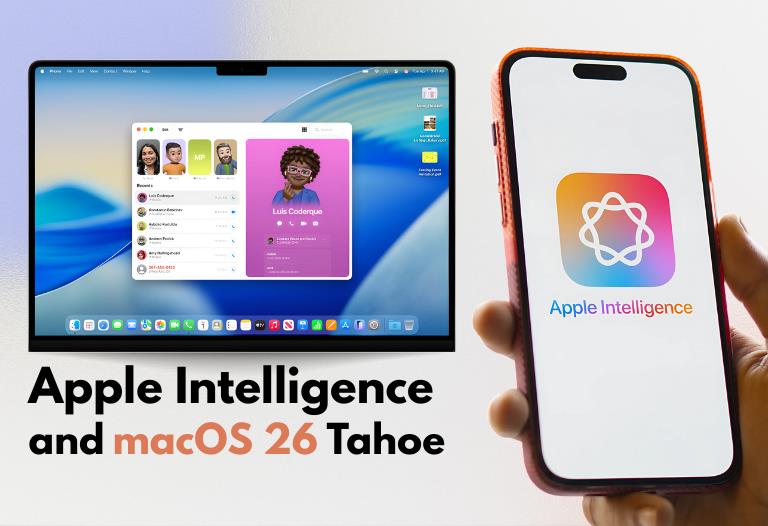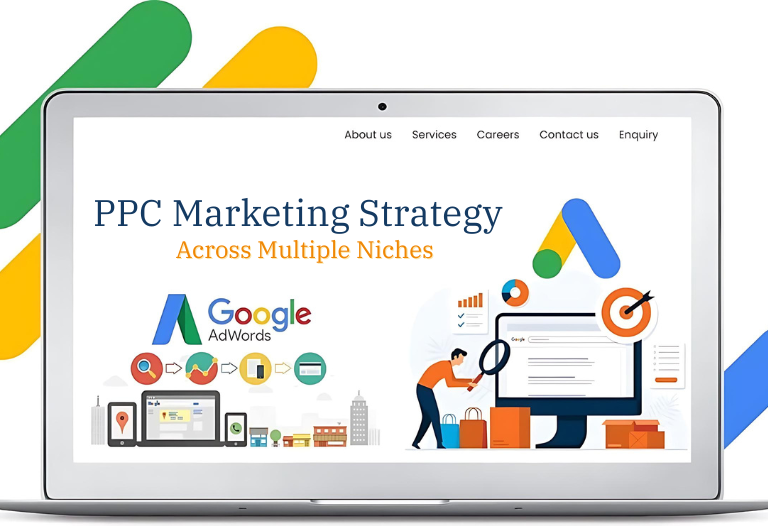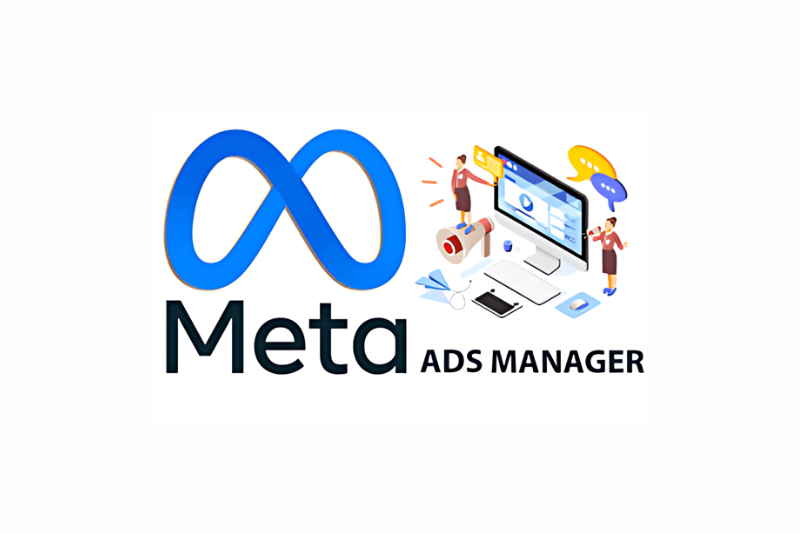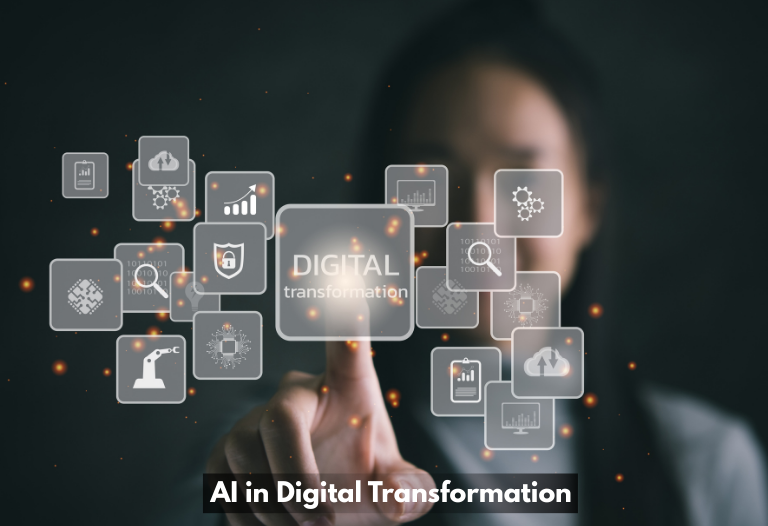
The digital transformation used to be about migrating to the cloud, launching an app, or automating repetitive tasks. But in 2025, that’s the table stakes. The real shift? It’s happening in the boardrooms and server rooms alike, where Artificial Intelligence (AI) is no longer an experimental edge play — AI in digital transformation is the new engine of enterprise growth.
Across the globe, organizations are investing billions in AI initiatives. And they’re not just chasing hype; they’re chasing relevance. From streamlining back-office operations to creating deeply immersive, hyper-personalized customer journeys, AI has become the strategic centerpiece of digital reinvention.
But here’s the kicker: while the promise of AI is exhilarating, the path to realizing that promise is anything but straightforward.
This blog explores why AI is central to modern digital transformation, what’s changing, what’s working, and what can go horribly wrong — unless approached with strategy, clarity, and realism.
The Trust Gap: Why Confidence in AI Is Still Under Construction
For all its breathtaking capabilities, AI—especially Generative AI, comes with an asterisk: Can we really trust it?
1.Trusting the Output: When Creativity Meets Uncertainty
Generative AI has wowed the world with its ability to write, code, design, and even strategize. But as impressive as that sounds, the same creative power introduces a fundamental problem: it sometimes gets things completely wrong and with complete confidence.
This is more than a glitch. It’s a credibility crisis.
The very nature of generative systems trained on vast and varied datasets—means they can hallucinate facts, fabricate citations, or offer plausible-sounding nonsense. For businesses, that’s not a quirk. That’s a liability. As McKinsey rightly noted, trust is the most significant barrier holding back generative AI adoption.
So, what’s the fix? Control. Guardrails. And a human-in-the-loop philosophy. Companies must ensure they oversee every stage. Boundaries must be met, from design and data training to real-time deployment. Generative AI can drift from an intelligent assistant to a rogue storyteller without clear boundaries and a robust feedback loop.
2.Cracking the Black Box: Why Explain ability Is Non-Negotiable
Even when AI gets the correct answer, the process to reach that answer is still unknown. This “black box” problem is especially pronounced with deep learning models and generative systems, where decisions emerge from complex layers of statistical relationships that even data scientists struggle to unpack.
This lack of interpretability is a deal breaker in regulated industries—think healthcare, finance, legal. If you can’t explain an algorithm’s output, how do you justify it to auditors, clients, or your team?
Ethics and Privacy: The Moral Compass of AI-Driven Transformation
Algorithms may power AI, but its real-world impact is deeply human. As organizations embed AI into their digital transformation strategies, they’re not just making tech decisions — they’re making ethical ones. And the stakes are high.
1.Bias Isn’t Just a Bug — It’s a Warning Sign
AI models learn from the data we feed them. But when that data reflects existing societal biases, AI doesn’t just absorb them. It amplifies them.
That’s not an abstract risk. It’s a real-world hazard affecting hiring decisions, credit approvals, legal assessments, and public service access. In essence, AI can scale inequality with machine efficiency.
Ensuring fairness and transparency in AI systems is no longer optional. It’s an ethical imperative and a regulatory requirement. As governments experiment with generative AI in service delivery, model governance becomes non-negotiable.
2.Privacy in the Age of Prediction
Personalization is powerful — and risky.
AI-powered personalization runs on data — often sensitive, personal data. But in a world governed by GDPR, CCPA, and rising global privacy laws, that data isn’t just fuel — it’s a liability if mishandled. One data misstep in healthcare or e-commerce can shatter trust and trigger legal risks.
Organizations need to treat privacy as a design principle, not an afterthought. That means:
- Adopting privacy-preserving techniques like differential privacy and federated learning
- Ensuring complete transparency in data collection and usage
- Implementing robust data governance frameworks from the ground up
- Keeping security measures airtight across the AI lifecycle — from training to deployment
Talent and Tech Readiness: The Twin Pillars of Scalable AI
Let’s face it — the AI revolution isn’t plug-and-play. For all its dazzling promise, the success of AI in digital transformation ultimately hinges on two gritty realities: people and infrastructure. And right now, many organizations are playing catch-up on both fronts.
1.The AI Talent Gap: A Shortage of Builders in a Boomtown
The market is flooded with AI ambition — but starved of AI talent.
From machine learning engineers to prompt designers, data scientists to MLOps experts, the demand for AI professionals has far outpaced the supply. And that shortage isn’t just slowing projects down — it’s stalling entire transformation agendas.
Organizations must stop treating talent as a recruitment problem and treat it as a strategic asset to stay ahead. That means:
Upskilling from within: Identify high-potential employees and train them in generative AI technologies — not just on the tech stack but also on ethical deployment, system integration, and cross-functional collaboration.
Building cross-disciplinary teams: AI isn’t just an IT function — it needs business strategists, domain experts, UX designers, and legal advisors working in sync.
Fostering a culture of continuous learning: With AI evolving by the month, yesterday’s expertise won’t cut it tomorrow. Organizations must embed learning into the DNA of their operations.
In short, AI fluency must become a company-wide capability, not just a job title.
2.Legacy Infrastructure: The Hidden Bottleneck
AI is not a feature — it’s a fundamental shift. But many organizations are trying to bolt it onto outdated systems, expecting a miracle.
Here’s the truth: AI doesn’t thrive in legacy environments. Integrating AI with rigid, monolithic infrastructures is like installing a jet engine on a bicycle — technically possible but not advisable.
Successful AI deployment requires:
- A clear and realistic roadmap that guides adoption from pilot to scale
- Investment in cloud-native infrastructure, scalable data platforms, and API-driven architectures
- Interoperability between gen AI systems and existing digital tools
- Flexibility to handle iterative development, testing, and versioning cycles
This transition can be complex, resource-intensive, and full of “you didn’t see that coming” moments. But those who plan for integration — not just innovation — will be the ones who deliver business value from AI.
From Pilot Projects to Scaled Impact: Rethinking Strategy for AI-Driven Transformation
At the beginning of any AI journey, it’s easy to get swept up in the excitement — pilot projects here, chatbots there, maybe a data science team sprinkled in. But once the novelty wears off, one question looms large:
Where’s the business value?
The harsh reality is that many AI initiatives stall in the experimentation phase, unable to cross the chasm into enterprise-wide impact. The problem isn’t the technology — it’s the lack of a strategy designed for scaling with purpose.
1.AI Strategy ≠ Just Technology
To truly transform through AI, organizations must stop viewing it as a one-off project or a tactical tool. Instead, AI must be embedded into the strategic operating model — as fundamental as finance or HR.
This means:
- Developing a clear enterprise-wide roadmap for AI adoption, aligned with business priorities
- Tracking performance KPIs specific to AI applications — not just generic ROI metrics
- Actively involving senior leadership to champion, fund, and evangelize AI initiatives across business units
Organizations that do this well treat AI not as a “tech thing,” but as a business transformation engine.
2.AI That Learns — And Learns Again
Here’s the thing: AI isn’t fire-and-forget. Unlike traditional software, AI models evolve (or degrade) depending on how they’re monitored, updated, and retrained.
Even the best-generation AI model will lose its edge without continuous feedback loops. Companies need to build robust systems for:
- Monitoring model performance against real-world data
- Collecting user feedback and usage patterns
- Iteratively retraining models to align with shifting goals and data landscapes
The real competitive advantage isn’t just launching AI — it’s keeping it sharp, aligned, and evolving with the business.
3.Change Management: The Human Factor
Transformation fails without people on board, no matter how powerful the AI is.
Employees often worry: Will AI replace me? Will it make my skills obsolete?
The answer needs to be crystal clear — and it’s up to leadership to deliver it. Organizations must:
- Craft and communicate a compelling change story around AI adoption
- Show how AI augments rather than replaces human roles
- Invest in upskilling and reskilling programs to ensure employees are part of the AI future, not casualties of it
On the customer side, trust must also be earned. Users want to know that AI is being deployed ethically, transparently, and responsibly — especially when personal data and automated decisions are involved.
Conclusion: Turning Potential into Performance
AI holds the promise to redefine what’s possible in digital transformation — but that promise comes with strings attached.
Trust, transparency, ethics, data privacy, talent shortages, integration complexity, and strategic misalignment aren’t just side notes — they’re mission-critical hurdles. And overcoming them isn’t optional; it’s the price of admission to the AI-driven future.
Successful organizations won’t have the flashiest models or the most enormous budgets. They’ll be the ones that:
- Prioritize trust and explainability
- Embed ethics and privacy into their AI DNA
- Invest in people as much as in platforms
- Build scalable strategies, not just experimental sandboxes
- Commit to continuous learning and improvement
Ultimately, the winners will be those who treat AI not as a plug-and-play tool. Still, as a long-term strategic partner — one that augments human ingenuity powers innovation and drives meaningful outcomes across the enterprise.
The path ahead is complex, but for those ready to lead with clarity, responsibility, and vision, AI isn’t just a technological upgrade — it’s the cornerstone of a more intelligent, faster, and more human-centered digital future.




 April 28, 2025
April 28, 2025